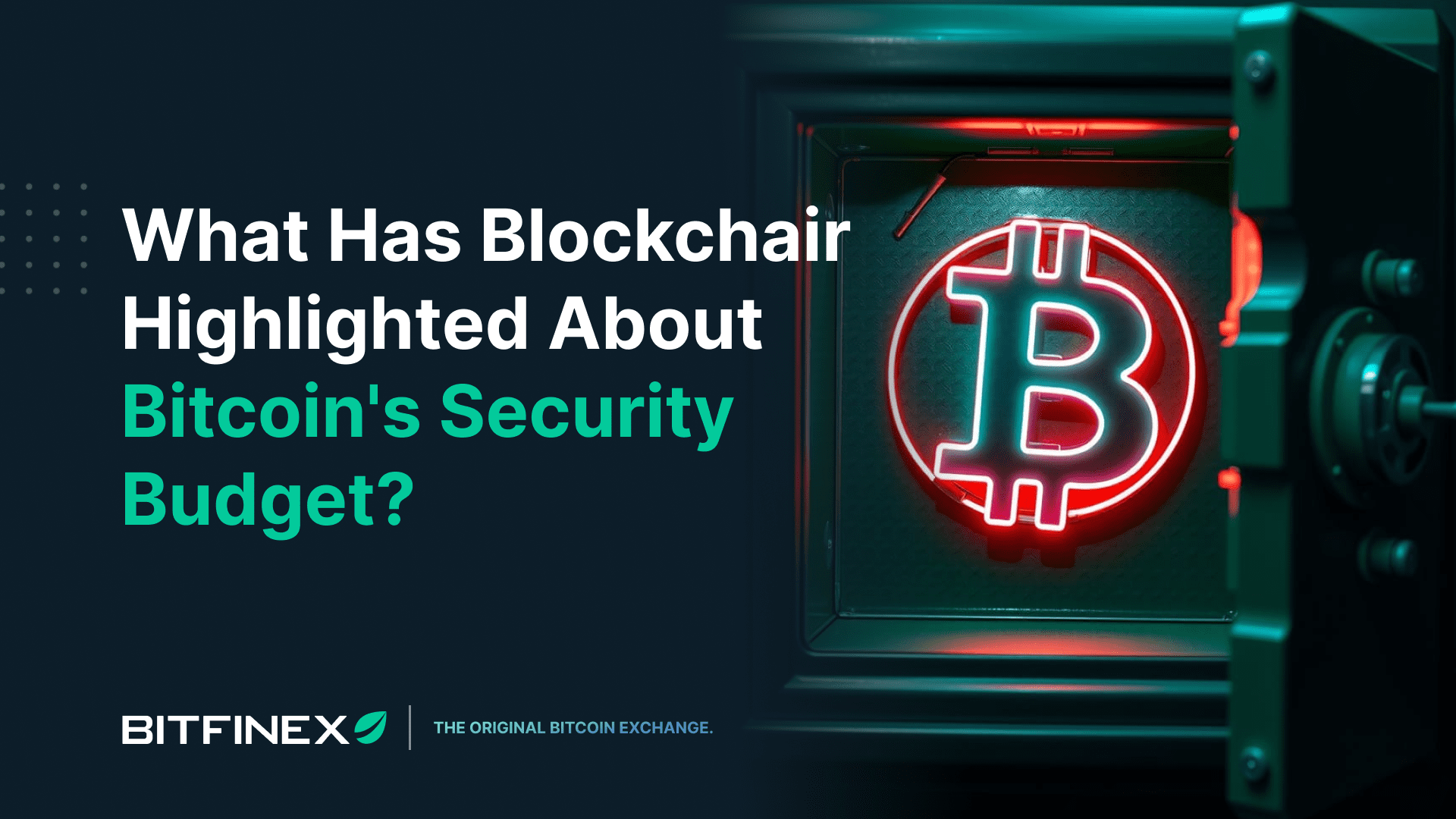
11 Jul What Has Blockchair Highlighted About Bitcoin’s Security Budget?
Blockchain explorer and analytics firm Blockchair recently launched Budget.Day, a website designed to raise awareness and foster discussion about Bitcoin’s declining security budget, an issue that could threaten the network’s long-term viability. The platform presents simplified, live visualisations to help users understand how Bitcoin’s security is funded through a combination of block subsidies and transaction fees. With the block subsidy halving every four years and the fee market still underdeveloped, Budget.Day highlights the growing risk of insufficient miner incentives, which could expose the network to potential 51% attacks. The site also explores potential responses, from scaling solutions to controversial proposals such as modifying the 21 million BTC supply cap. By addressing widespread misconceptions, such as relying on hashrate growth or optimistic price projections, Blockchair aims to promote a more informed, solutions-oriented debate about Bitcoin’s future security.
How Does Bitcoin’s Security Model Actually Work?
Bitcoin’s security model is grounded in a decentralised Proof-of-Work (PoW) consensus mechanism, where miners expend computational energy to validate transactions and secure the network. This model relies on economic incentives to align the interests of participants and deter malicious behaviour. Miners compete to solve cryptographic puzzles, and the first to find a valid solution earns the right to add a new block to the blockchain. This process requires significant energy expenditure and hardware investment, making attacks such as double-spending or chain reorganisations economically unfeasible unless the attacker controls a majority of the network’s total hash rate. The difficulty adjustment algorithm ensures that blocks are produced roughly every 10 minutes regardless of changes in network hash power, maintaining predictable issuance and a steady cadence of transaction processing.
The “security budget” refers to the total amount of value paid to miners to incentivise this ongoing work, comprising two key components: the block subsidy and transaction fees. The block subsidy is the new bitcoin minted in each block, which started at 50 BTC and halves approximately every four years (currently at 3.125 BTC per block as of the 2024 halving). Transaction fees are paid by users to have their transactions included in blocks, and they become increasingly important over time as the subsidy diminishes. Together, these rewards must remain economically attractive enough to sustain miner participation. If the security budget falls below what miners require to cover their operational costs, some may drop off the network, reducing hash rate and making the system more vulnerable to attacks.
Bitcoin’s long-term security model anticipates the eventual phasing out of the block subsidy, which will approach zero around the year 2140. As a result, the network will eventually rely entirely on transaction fees to maintain its security budget. This shift places significant importance on continued high demand for block space and a healthy fee market. If transaction volumes and fees are too low in the subsidy-free future, Bitcoin could struggle to sustain sufficient hash power, unless alternative mechanisms (like optional sidechains or off-chain solutions such as the Lightning Network) generate enough economic activity to sustain base-layer fees. Critics have questioned whether fees alone will be sufficient to maintain robust security, while proponents argue that scarcity, increased adoption, and economic utility will naturally support a viable fee market.
A key feature of this model is its game-theoretic resilience, where miners are economically incentivised to act honestly because attacking the network would not only be costly, but would also undermine confidence in the system, and by extension, the value of the attacker’s own bitcoin holdings and mining infrastructure. Additionally, Bitcoin’s fixed supply schedule means that the issuance component of the security budget is decreasing over time, so the long-term viability of the network depends on demand-driven transaction fees and ongoing technological adaptation. Thus, Bitcoin’s security model is not static, but a dynamic equilibrium between economic incentives, user behaviour, and technological innovation, all of which must continue to evolve in tandem to preserve the network’s integrity.
What is Budget.Day and Why Does it Claim Bitcoin’s Security Model is Potentially at Risk?
Blockchair’s newly launched website, Budget.Day, serves as an educational resource and warning signal concerning Bitcoin’s declining security budget or block subsidy which gets reduced by 50% every 210,000 blocks when the Halving occurs, and could become a structural issue with long-term implications for the network’s resilience. The site offers a plain-language breakdown of how Bitcoin’s PoW model depends on miner compensation through block subsidies and transaction fees, and what happens when that financial incentive weakens. With block rewards halving every four years and transaction fees failing to bridge the gap, Budget.Day argues that Bitcoin could eventually face a situation where its economic defences no longer deter attacks like double-spending, transaction censorship, or network stalling. The concern is not theoretical; it’s grounded in measurable trends and declining miner revenue relative to Bitcoin’s overall value.
At the heart of the site’s argument is the diminishing block subsidy, which has now fallen to 3.125 BTC per block and will ultimately reach zero around the year 2140. In theory, this declining subsidy should be offset by a robust fee market, but the data suggests that has not occurred. As of early 2025, transaction fees contribute just a fraction of the total miner revenue, and fee levels remain low due to limited block space and users’ willingness to seek cheaper alternatives on other chains. Budget.Day warns that if revenue from fees and BTC price appreciation do not outpace the subsidy’s decline, fewer miners may find it worthwhile to secure the network. This would reduce hash power, lowering the cost threshold for a successful 51% attack and weakening the deterrent that underpins Bitcoin’s trustless design.
Budget.Day outlines several potential paths forward, ranging from technical scaling to more radical protocol changes. The first option, on-chain scaling, includes increasing block size, reducing block time, or incorporating optional block extensions. These changes could allow more transactions per block, enabling lower individual fees while maintaining adequate aggregate miner compensation. More controversial proposals involve shifting Bitcoin’s consensus mechanism to alternatives like proof-of-stake or implementing ongoing inflation through mechanisms like tail emission or demurrage. However, these approaches raise philosophical and practical concerns, including violations of Bitcoin’s fixed-supply principle and increased centralisation risks. The site presents these not as endorsements, but as trade-offs that must be critically assessed.
A key part of Budget.Day’s effort is to challenge widely held assumptions about Bitcoin’s future security. The site cautions that rising hashrate alone does not guarantee security, particularly if it results from cheaper energy or hardware. It also rebuts the idea that future Bitcoin price increases will automatically resolve the issue, noting that miners are paid in BTC and potential attackers can bribe in BTC, making fiat-denominated projections irrelevant to network safety. The conclusion is direct but measured: without meaningful adaptation or reform, Bitcoin’s current incentive model may not be sufficient to secure the chain in the long term. The site does not claim to offer final answers but rather seeks to elevate a technical and economic issue that has remained under-discussed despite its foundational importance.
Is Blockchair Concern Trolling or is This a Conversation Worth Having?
The team behind Budget.Day deserves recognition for opening a conversation that many in the Bitcoin community have long preferred to sidestep. Addressing the long-term viability of Bitcoin’s security budget is not an easy task, especially when it challenges prevailing narratives of self-sufficiency and inevitable success. Rather than promoting complacency, the project highlights real risks associated with declining miner incentives and the assumption that rising prices or speculative demand will naturally solve every structural issue. By presenting the data in a clear, accessible way, Budget.Day invites the community to engage with these concerns honestly, something that requires both technical insight and a willingness to question orthodoxy.
When Bitcoin was introduced, it was envisioned as a peer-to-peer electronic cash system, enabling high volumes of everyday transactions with minimal fees. Early usage reflected that aim, with microtransactions and direct payments playing a central role. Over time, however, the narrative shifted. Faced with scalability limitations and fierce internal debates over block size, Bitcoin’s dominant use case evolved into that of “digital gold”, a scarce, deflationary asset meant to be stored rather than spent. This transformation has brought certain advantages, such as broader institutional acceptance and a strengthened store-of-value appeal, but it has also created an unintended side effect: the diminishing use of Bitcoin for routine payments has undermined the development of a sustainable fee market that can eventually replace the block subsidy. This dynamic poses a structural challenge for the long-term integrity of Bitcoin’s proof-of-work system. The reliance on rising transaction fees to compensate for falling subsidies assumes ongoing, high-volume usage of the base layer. Yet if most holders are investors who rarely move their coins, and if users seeking low fees migrate to second-layer solutions or alternative blockchains, the on-chain activity needed to support miner incentives may never materialise.
Unorthodox tokenisation protocols like Ordinals and Runes sparked significant controversy within the Bitcoin community due to their impact on network fees and perceived divergence from Bitcoin’s original purpose. These protocols enabled the inscription and minting of digital assets directly on the Bitcoin blockchain, often leading to sharp spikes in transaction fees during periods of high activity. For many everyday users, this rendered Bitcoin temporarily unusable, with basic transactions becoming prohibitively expensive. Critics, particularly long-time Bitcoiners, dismissed these tokens that cluttered the network and exploited block space for speculative purposes. However, from the perspective of miners operating on razor-thin margins in an increasingly competitive landscape, these fee spikes provided a much-needed boost to revenue, so much so that some miners began offering private mempools and Out-of-Band Relay Channels like Marathon’s Slipstream, directly to tokenisation projects. With block subsidies declining over time, the additional income generated by Ordinals- and Runes-driven demand offered a temporary economic reprieve, highlighting the growing tension between Bitcoin’s evolving use cases and its shrinking security budget.
Several voices in the Bitcoin development community, including Peter Todd, have voiced concern over this issue. Todd has openly discussed the possibility that a hard fork introducing modest ongoing inflation, such as tail emission, or mechanisms like demurrage (A form of HODL Tax) might eventually be needed to secure the network as the subsidy approaches zero. Such proposals are understandably controversial, as they challenge one of Bitcoin’s most sacrosanct design principles: the fixed 21 million BTC supply cap. However, raising these options should not be seen as heretical, but as a responsible effort to preserve the system’s long-term viability. Budget.Day does not prescribe a specific solution but should be commended for bringing these perspectives to the surface. Ignoring the potential mismatch between Bitcoin’s current usage patterns and its future security model does the network no favours. By choosing to engage seriously with difficult questions, the leadership behind Budget.Day is helping ensure that Bitcoin’s evolution is guided by informed deliberation rather than blind faith.



